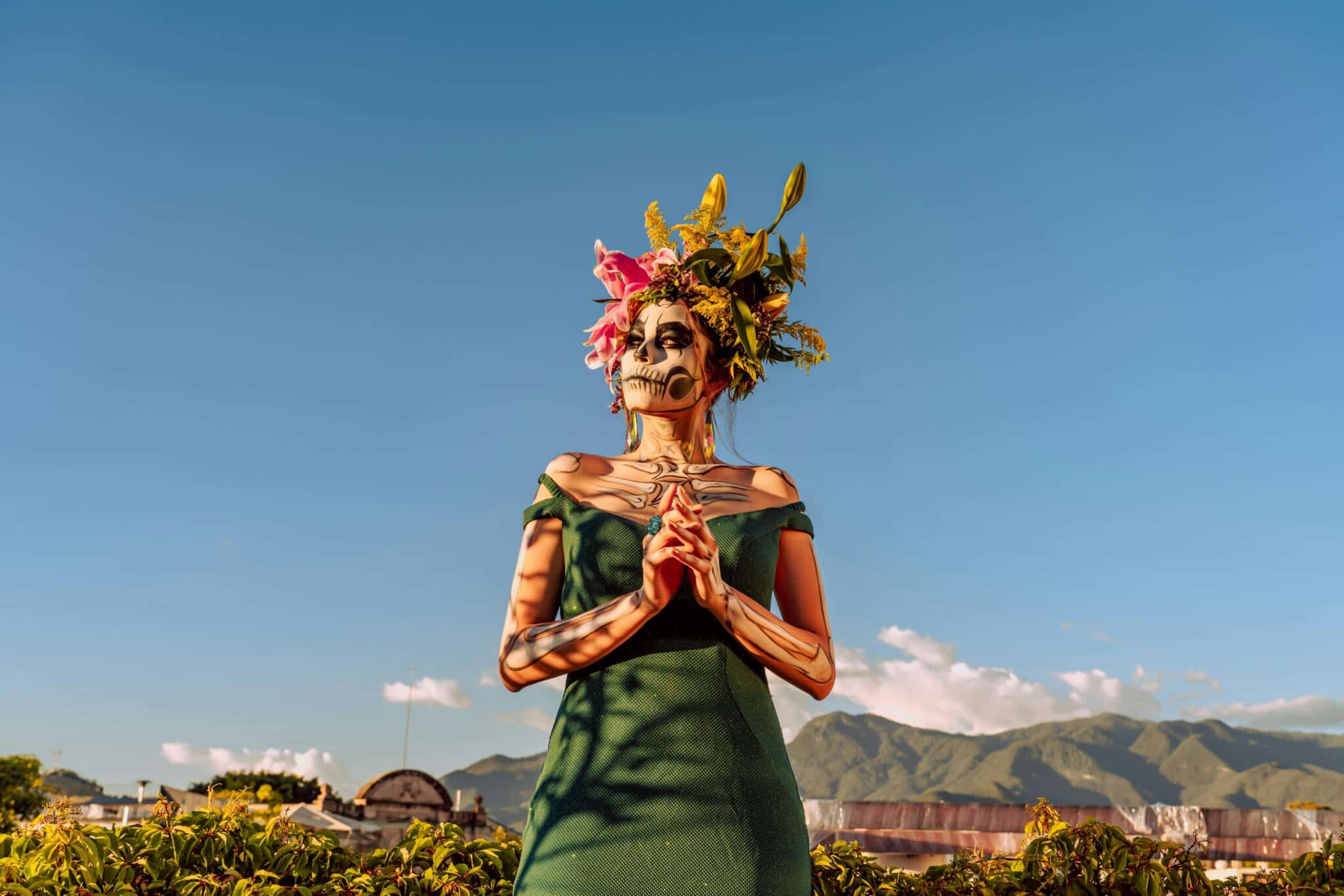Immerse yourself in Dia de los Muertos, a unique Mexican celebration that honors the dead with joy and gratitude. Far from being a simple commemoration, the Day of the Dead is an explosion of color, flavor and music. From ofrendas and papels picados to mariachi songs and traditional foods, discover the rituals and symbols of this extraordinary celebration.
Significance of the Mexican Day of the Dead

Day of the Dead, or Día de los Muertos in Spanish, is a traditional Mexican celebration honoring the dead. Far from being a sad holiday, it is a joyous occasion when families come together to remember their deceased loved ones and celebrate their lives. It is deeply rooted in Mexican culture, combining ancestral indigenous elements with Catholic traditions inherited from Spanish colonization.
The Day of the Dead is celebrated every year on November 1st and 2nd, with rituals rich in symbolism and colorful festivities that pay tribute to the memory of departed loved ones.
The roots of Dia de los Muertos
Far from being a simple European import, the Festival of the Dead has its roots in ancient Mesoamerican traditions. Pre-Hispanic civilizations such as the Aztecs and Mayans honored their ancestors with rituals and offerings. This practice then blended with Catholic beliefs introduced by Spanish colonists in the 16th century, giving rise to a unique celebration deeply rooted in Mexican culture.
Day of the Dead rituals and symbols
At the heart of the Day of the Dead are the offerings, known as "ofrendas". These miniature altars, set up in homes and cemeteries, form a veritable bridge between the world of the living and that of the dead. They are decorated with photos of the deceased, orange flowers (cempasúchil) symbolizing the sun and the guide of souls, candles lighting the way, food and drink to share a symbolic last meal, and personal objects recalling the passions of departed loved ones.
Some of the symbols and messages on this day:
- Papel picado, finely cut paper decorations, are a ubiquitous feature of the Day of the Dead. The colorful designs, often depicting skeletons, flowers and religious symbols, add a festive and joyful touch to the celebrations. They celebrate life and death in a joyful and colorful way, and remind us that death is a natural stage in the cycle of life.
- Music also plays an important role in the Day of the Dead. Traditional songs, called "mariachis", are performed during processions and festive gatherings. These joyful songs celebrate life and the memory of departed loved ones.
- Food is a central element of Day of the Dead celebrations. Traditional dishes such as "pan de muerto" (sweet bread scented with orange blossom), tamales (corn husks filled with meat or beans) and "moles" (rich, spicy sauces) are prepared and shared with family and friends.
Worldwide recognition
The Festival of the Dead was recognized by UNESCO as an intangible cultural heritage of humanity in 2008. This recognition underlines the importance of this tradition for Mexican culture and its contribution to the diversity of world heritage.
The Day of the Dead is much more than just a holiday. It's a unique opportunity to discover Mexican culture in all its richness and diversity. It's an invitation to explore ancestral traditions, deep-seated beliefs and a unique sense of life and death.
